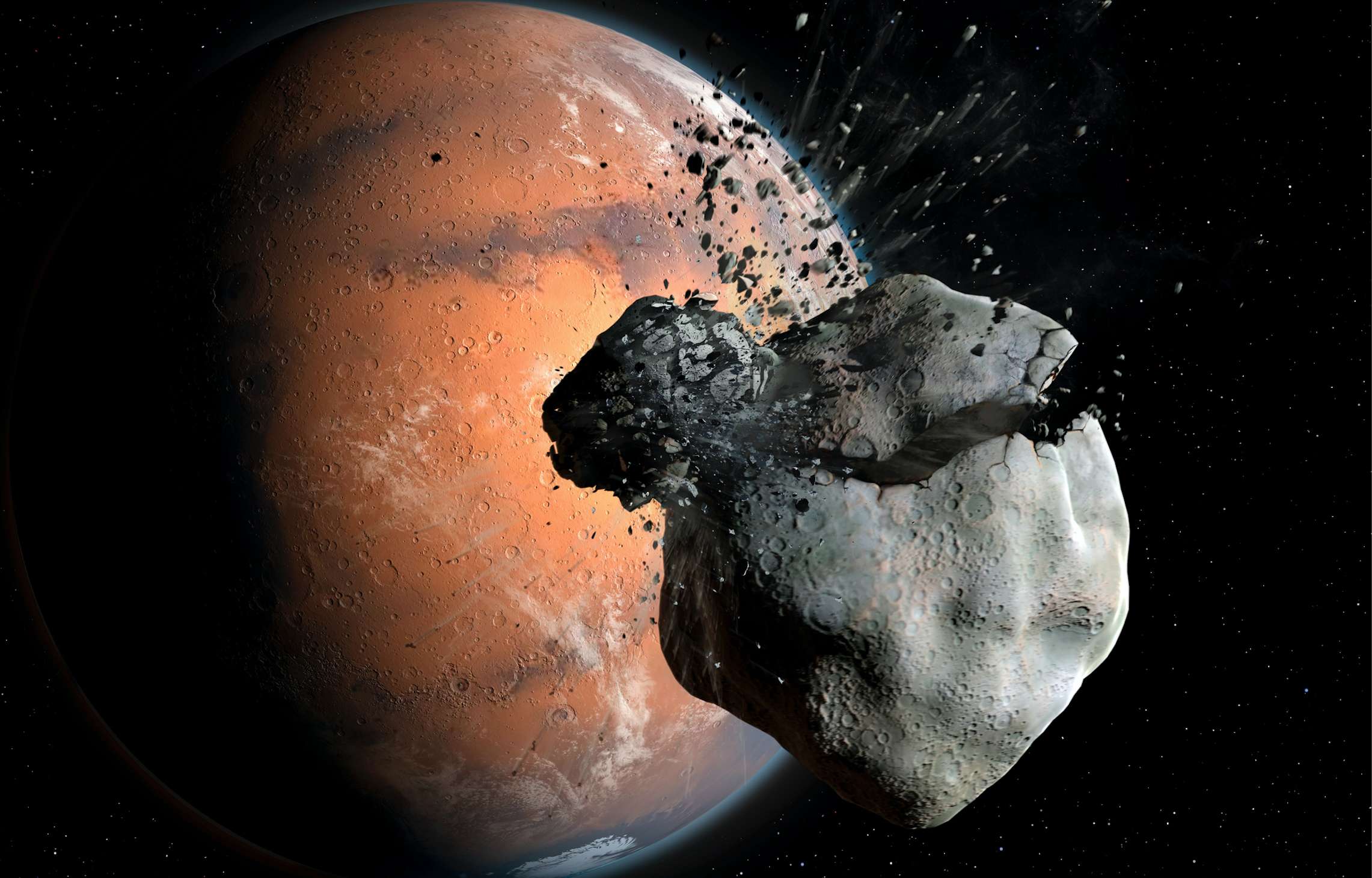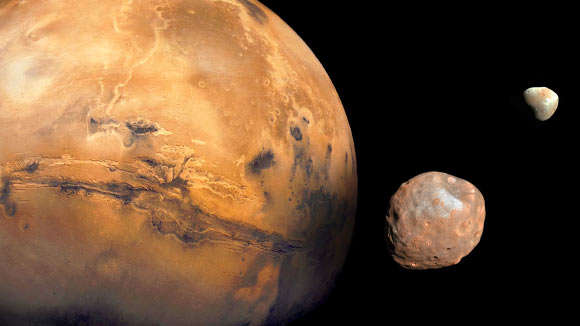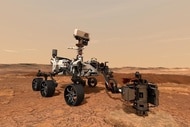Create a free profile to get unlimited access to exclusive videos, sweepstakes, and more!
The Martian Moon Phobos Is Doomed to Crash into the Planet
When will Mars' moon Phobos crash into the planet?

The 2020 disaster film Horizon Line (streaming now on Peacock) opens on Sara (M3GAN’s Allison Williams) on her way to a friend’s wedding on the island of Mauritius — the ancestral home of the dodo, by the way — when she meets up with an ex-boyfriend named Jackson (Alexander Dreymon), who is also headed to the wedding. The two of them board a small passenger plane for the last leg of the trip and the pilot tragically dies mid-flight. Suddenly, Sara and Jackson, neither of them pilots, have to keep the plane from plummeting to the Earth, or die.
An airplane will take care of itself for a while, riding on its own steam and the laws of physics to stay above the ground. But wait long enough and it’s doomed to end its flight one way or another. The same is true of moons and orbits, as beautifully demonstrated by the two moons of Mars: Deimos and Phobos. Scientists warn that someday soon (cosmically speaking) both of the Martian moons will disappear from the sky.
The Opposing Fates of Mars’ Moons Deimos and Phobos
To get a grip on what’s happening with the Martian moons (and our own Moon, too) we need first to grapple with how orbits work. Getting a moon or a spacecraft to the right height above a planet is only the first step in achieving orbit. The second, and more important step, is speed.
RELATED: What Secrets About Mars is Its Moon Phobos Hiding?
Imagine that you could hold a moon in your hand and throw it as hard as you can parallel to the ground. It would fly like a baseball over the surface of the world for a while, before being pulled to the ground by the force of gravity. The distance it gets before hitting the ground is basically a function of velocity and gravity. The faster it travels, the further it gets before gravity wins. But if you can throw something fast enough, the Earth will curve away before gravity pulls your baseball moon to the ground. When gravity pulls an object toward the Earth at the same rate that the Earth curves away, that’s a stable orbit.
Moons exist in mostly stable orbits (they wouldn’t be very good moons otherwise), but they degrade a little bit every day. And the orbits of the Martian moons are degrading in opposite directions.
Like Earth’s Moon, Deimos is stealing rotational energy from Mars. Consequently, the rotation of Mars is slowing down, and the Martian day (Sol) is getting a little longer. Deimos’ orbit is also getting a little wider. If we wait long enough, its gravitational tether with Mars will snap and it will go careening off into space. Phobos, by contrast, is bound to Mars for the long haul. It’s getting closer to Mars every day and eventually, the two of them could become one.
The Looming Death of Phobos
The larger of Mars’ two moons was discovered by Asaph Hall, way back in August 1877. It measures in at just 27 kilometers in diameter at its widest point and orbits incredibly closely. Phobos lies at an altitude of just 6,000 kilometers (3,700 miles) above the Martian surface. By comparison, our own Moon is nearly a quarter-million-miles from here.
At that distance, Phobos can interact with the thin Martian atmosphere, creating drag and slowing it down. Slowing down, as you remember from our mental exercise up above, causes an orbit to decay, pulling Phobos closer to the surface. That, in turn, creates even more drag slowing the moon down even more, and the cycle continues until eventually Phobos meets a destructive end.
Astronomers have been able to make pretty accurate predictions of Phobos’ eventual death using historical methods, but the arrival of Curiosity and Perseverance on the red planet leveled up our ability to track the movements of the Martian moons.
RELATED: Incredible video of a solar eclipse… from the surface of Mars!
Over the last couple of decades, scientists have witnessed a number of solar eclipses on Mars. They aren’t as dramatic as they are on Earth because Phobos and Deimos are considerably smaller and oddly shaped. Instead of blocking out the Sun, you’d see an oddly shaped pupil moving across the Sun’s fiery eye. By closely measuring the apparent size of Phobos against the Sun over time, scientists have been able to better understand its evolution and its ultimate fate.
Scientists estimate that about 50 million years from now, Phobos will crash into the surface of Mars in one of the most violent impacts the Red Planet has ever seen. Alternatively, it might instead break up into a few million pieces, spreading a diffuse ring around Mars. Either way, the future won’t be kind to Mars’ moons. Enjoy them while you can.
Experience the true terror of falling to the Earth in Horizon Line, streaming now on Peacock!



























